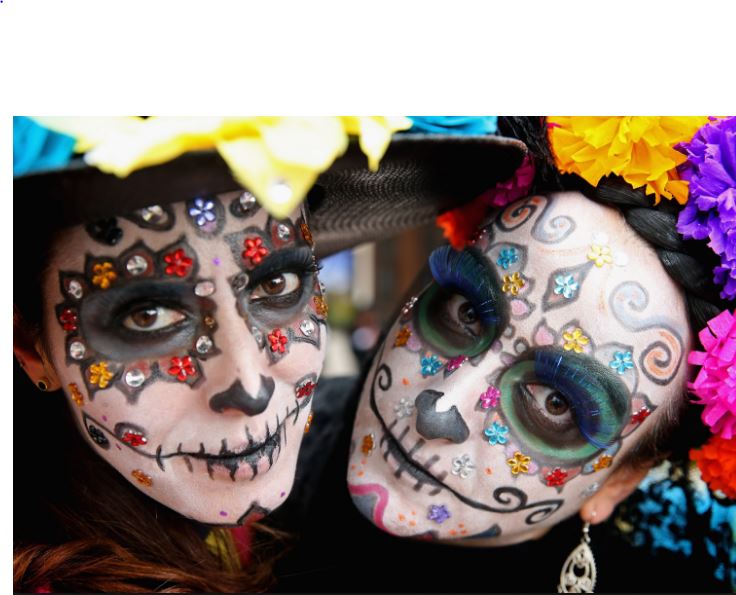
Do you know where Halloween originated? If you guessed the United States.. you’re wrong! Halloween actually began in Ireland about 2,000 years ago as the Spirits of Meath Halloween Festival, an ancient Celtic Festival held in County Meath. The birthplace of Halloween, naturally, is home to one the biggest celebrations of the holiday. Throughout Ireland, Halloween is celebrated with bonfires, party games, traditional food such as barmbrack – an Irish fruit cake that contains coins, button, rings, and other (non-edible) fortunetelling items- and, of course, beer (among other drinks of choice). Why bake buttons and rings into a cake? Fortunetelling is part of the old Irish Halloween tradition and if a young woman gets a ring that has been baked in a pastry, bread, or even mashed potatoes, then she’ll be married by next Halloween. Tricks are also an important part of the Irish Halloween tradition – kids knock on doors, then run away before the doors get opened by the owner (usually after they’ve already gotten candy from other houses). Thus is the origins of Trick-or-Treating.
Curious about Halloween celebrations in other cultures? Take a look at some other countries that will be decked out in costume this October 31st.

Mexico doesn’t actually celebrate Halloween, but their Dia de los Muertos celebration begins on October 31st and continues through November 2nd. During this festival, Mexicans remember the deceased, tell their stories and celebrate their lives. Celebrations include family feasts, skull-shaped sweets, tequila, dancing, mariachi music, and parades of people dressed as skeletons to honor past ancestors.

Halloween in Japan has become more popular over time, although still remains different from Halloween in the United States. Due to the well established popularity of Cosplay (costume play: dressing up as manga / anime characters) in Japan, the costume and commercialism aspect of celebrating Halloween is appealing to Japanese people. However, the Trick – or – Treating aspect of Halloween is not so appealing and will most likely not gain popularity in the country. Why? Because of their culture. It is important in Japanese society to avoid being a bother or pain to someone else. Having to go around collecting candy from others is viewed as too much of an inconvenience and is therefore discouraged. Halloween is mainly centered around dressing up and partying, which can be seen by the large masses of costumed people flooding the streets of Tokyo and the city’s Shibuya district.

In France, Halloween is known as an American Holiday and is not celebrated for any other reason than to dress up and party. Halloween has been adopted by the French in recent years and is popular due to the French’s love for fêtes and costumes. Notable Halloween celebrations in France occur in the town of Limoges, where there is a Parade of Ghosts and Ghouls every year, and at the Breakfast In American Diner in Paris. The French typically wear traditionally scary costumes – like witches, mummies or ghosts- rather than cute costumes – like superheroes, princesses, or celebrities.

Germany celebrates Halloween as All Saints Day, from Octobrt 30th to November 8th. All Saints Day is spent attending church, honoring the saints who have died for the Catholic faith and visiting and remembering dead family members. It is also the tradition for Germans to hide their knives on All Saints Day, so the returning spirits won’t be harmed by random knife movements during the day. Germans have also adopted American style traditions of Halloween and many people wear costumes and partake in celebrations at night. Trick- or – Treating is not very popular and it is only in the metropolitan cities of Germany that you will see groups of children actually go door – to door saying either Süßes oder Saures or Süßes, sonst gibt’s Saure (Trick or Treat!) as they collect treats from their neighbors. This is partly due to the fact that just eleven days later it is the tradition of children to go door – to door on Saint Martinstag with their lanterns. They sing a song and then they are rewarded with baked goods and treats.
Sources: The Travel Channel, GaijinPot, The German Way



